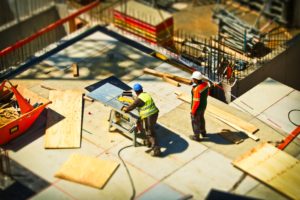 Despite the inventory headwinds being felt by the housing market, construction of new homes seems to be gathering speed. An indicator of this is the volume of residential construction loans which is seeing a steady increase, according to an analysis by the National Association of Home Builders (NAHB).
Despite the inventory headwinds being felt by the housing market, construction of new homes seems to be gathering speed. An indicator of this is the volume of residential construction loans which is seeing a steady increase, according to an analysis by the National Association of Home Builders (NAHB).
The NAHB said that the 1.7 percent rise in residential construction loan volumes in the second quarter of 2018, marked 21 consecutive quarters of growth in this segment.
Easing credit conditions and a growing loan base are being seen as the key factors that have helped in the expansion of residential construction activity, the analysis revealed. "According to data from the FDIC and NAHB analysis, the outstanding stock of 1-4 unit residential construction loans made by the FDIC-insured institutions rose by $1.3 billion during the second quarter of 2018, raising the total stock of outstanding loans to $77 billion," Robert Dietz, Chief Economist at NAHB noted in the association's blog.
The analysis indicated that year over year residential construction loans had increased 8 percent, giving a pointer to the additional volume builders intended to add to construction activity in this year. "Since the first quarter of 2013, the stock of outstanding home building construction loans has grown by 89 percent, an increase of $36 billion," Dietz wrote.
Acquisition, development, and construction (AD&C) loans have historically had a tight availability, yet the recent growth in the volume of AD&C loans is a positive development, according to Dietz. Citing FDIC data, the analysis said that the total decline from peak lending for home building construction loans continued to exceed that of other AD&C loans such as loans for building nonresidential, land development, or multifamily homes.
Despite these encouraging signs, Dietz cautioned that there still existed a lending gap between home building demand and available credit. "This lending gap is being made up with other sources of capital including equity, investments from non-FDIC insured institutions and lending from other private sources, which may in some cases offer less favorable terms for home builders than traditional AD&C loans," he concluded.

 theMReport.com Your trusted source for mortgage banking news
theMReport.com Your trusted source for mortgage banking news








